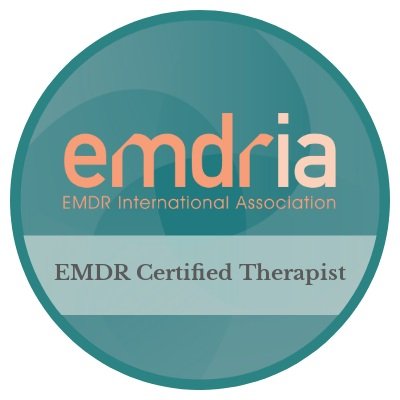Hello fellow human beings. I am a Licensed Marriage and Family Therapist, Certified EMDR Therapist, and EMDRIA Approved Consultant that specializes in treating emotional trauma. My hope is that this site will clearly explain my philosophies as a therapist to help you decide if I would be the best fit to show you how to meet your emotional needs. The following is a general introduction to psychological trauma, and how I treat the many ways it may manifest within a person. More about the types of therapy I use, and personal information about me can be found using the links at the top or bottom of the page.
What is Trauma and the Purpose of Trauma Informed Psychotherapy
Psychological Trauma has been defined in many ways, but is most commonly referenced and well known through the list of symptoms for the most well known diagnosis associated with the term trauma, Post Traumatic Stress Disorder(PTSD). Many of the client’s that I have treated for other presenting symptoms such as depression, anxiety, panic disorder, phobias, or that maybe even don’t meet criteria for any specific diagnosis, but still struggle with maintaining healthy relationships, anger management, trust issues, social anxiety, or any other behaviors or extreme emotional responses that they identify as preventing them from living a more peaceful, genuine, functional life have most of the time discovered these symptoms to be rooted in a traumatic experience or experiences. When these traumatic experiences are identified and worked through successfully in therapy their associated symptoms tend to lessen substantially, and allow the person to function more adaptively under stress and feel more in control of their lives and how they respond to their emotions instead of reacting to them in ways that can be more detrimental to us long term. What seems to happen when someone experiences something traumatic is that the parts of their brain that triggers the fight, flight or freeze response, or what I call the protective Tripple F part of our nervous system is activated due to the detection of a possible threat. If the the emotionally disturbing components(beliefs, thoughts, feeling, emotions, images, sounds, body sensations) associated with the traumatic experience is not integrated and the symptoms do not dissipate or extinguish on their own, the parts of our brain that controls the Triple F response can become hypersensitive and trigger this response at times that there is not a physical threat, generating an emotional response that we may even ourselves perceive as being disproportionate to the current situation that in some way shape or form reminds us of a past traumatic experience. These extreme beliefs, thoughts, feeling, emotions, or body sensations are not always something we can make sense of with the parts of our brain that are meant to differentiate between actual potential threats to our physical safety(like a car driving towards us at a high speed) from non-physically threatening situations(like public speaking) as these parts of our brain are less accessible unless we learn to willfully access them when this mechanism in our nervous system malfunctions. Both can cause our Triple F system to switch on, however, for some the intensity of unpleasant emotions might be substantially more intense and persist, even in spite of us being able to acknowledging the extreme intensity as being disproportionate to a situation such as in the case of social anxiety. Most people feel somewhat uncomfortable about speaking in front of groups of people, but some may actually faint from the anxiety or have a panic attack that prevents them or makes it extremely difficult and challenging to do something we might want to. The purpose of trauma therapy is to allow the logical part of our brain that exerts functions like impulse control, and logical reasoning to re-engage in spite of experiencing any emotional disturbance so we can have to opportunity to choose how to respond to our emotions more adaptively and not have them control our behavior, so we can engage in emotionally difficult tasks.
My Philosophy
My Philosophy is rooted in the newer notion that is less commonly referenced in media and pop culture that mental health symptoms that serve as the basis of Psychiatric Diagnoses such as depression, and anxiety, make more sense when perceived through the lenses of the unhealed traumas they are rooted in. Some may disagree with this as they may not be able to readily identify any specific traumatic experiences or would want to even if they could, that they can directly relate to the onset of their emotional disturbance or behavioral symptoms or diagnosis. I do not believe someone is depressed or anxious or experiences any unpleasant symptoms for no reason. Just because we don’t know the reason someone experiences mental health symptoms doesn’t necessarily mean there isn’t one. The avoidance of the experiences that may be causing or influencing current symptoms and their corresponding thoughts, emotions, and beliefs can lead to emotional distress, internal conflict, and a lower degree and or quality of internal and external connection we have with ourselves and the world. While the aversion serves the purpose of keeping us at a greater rather than lesser level of functioning, for some it can have side effects that cause them to have trouble succeeding in various areas of their lives sometimes even to the point of them becoming functionally impaired and even fearing improvement or success. This means they may have trouble taking care of their responsibilities consistently such as sustaining healthy relationships or employment and can even reach the point where they feel like they can’t survive without an effective, but usually unhealthy means of emotionally coping such as substance abuse, or other behavioral addictions done in excess like binge eating unhealthy foods or not eating at all, over exercising, gambling, or excessive promiscuity(self defined or objectively yielding an unpleasant collateral effect), among others that distracts or floods them with the emotions they have become disconnected from or are unable to avoid.
“When we are no longer able to change a situation, we are challenged to change ourselves.”
-Victor E. Frankle
I believe this emotional distress, internal conflict, lower degree of internal and external connection resulting from unprocessed trauma can become progressively more problematic for the relationship we have with ourselves and our external connections with our friends, significant others, parents, co-workers, or even our own children. Facilitating a process of improving the quality of connection a client has with themselves utilizing the orientations in the Therapy section of this site has shown through research to yield reductions in emotional distress, intrusive thoughts, and internal conflicts along with increased feelings of relief, inner peace, and calm, which in addition to improving our relationship with ourselves can of course also have a positive effect on the ways we show up in our external relationships.
These results for some, however, may not be worth engaging in the process necessary to obtain them as therapy is understandably usually not something most people may be excited about. This ambivalence is something that can be processed in therapy itself, however. In addition, there is the conscious or unconscious tendency to avoid the very emotions that arise from just thinking about attending therapy or how attending therapy would cause someone to perceive themselves differently that can adversely affect the decision to actively seek out, and attend psychotherapy, in addition to any challenges that can arise from trying to find the right therapist or one that has any availability. This can cause us to minimize our symptoms allowing us to justify them not being unpleasant enough that therapy would be warranted, which is our minds well-intentioned attempt to help us avoid feeling pain. This can be why individuals don’t end up seeking therapy until their symptoms are so severe that they become intolerable to the person or the person experiences functional impairment, as mentioned previously, or until they struggle enough from the unpleasant collateral effects of the way they have tried to cope with their trauma and avoided or ignored the symptoms that may more likely be indicative of their desire to heal from these experiences.
“Inner peace is the result of increased internal dependence.”
-Aaron Koba


![20171206_164130[1].jpg](https://images.squarespace-cdn.com/content/v1/5c3421983e2d09426b42eb84/1548487104335-JN919QFM4YIYWEM4KIXG/20171206_164130%5B1%5D.jpg)


